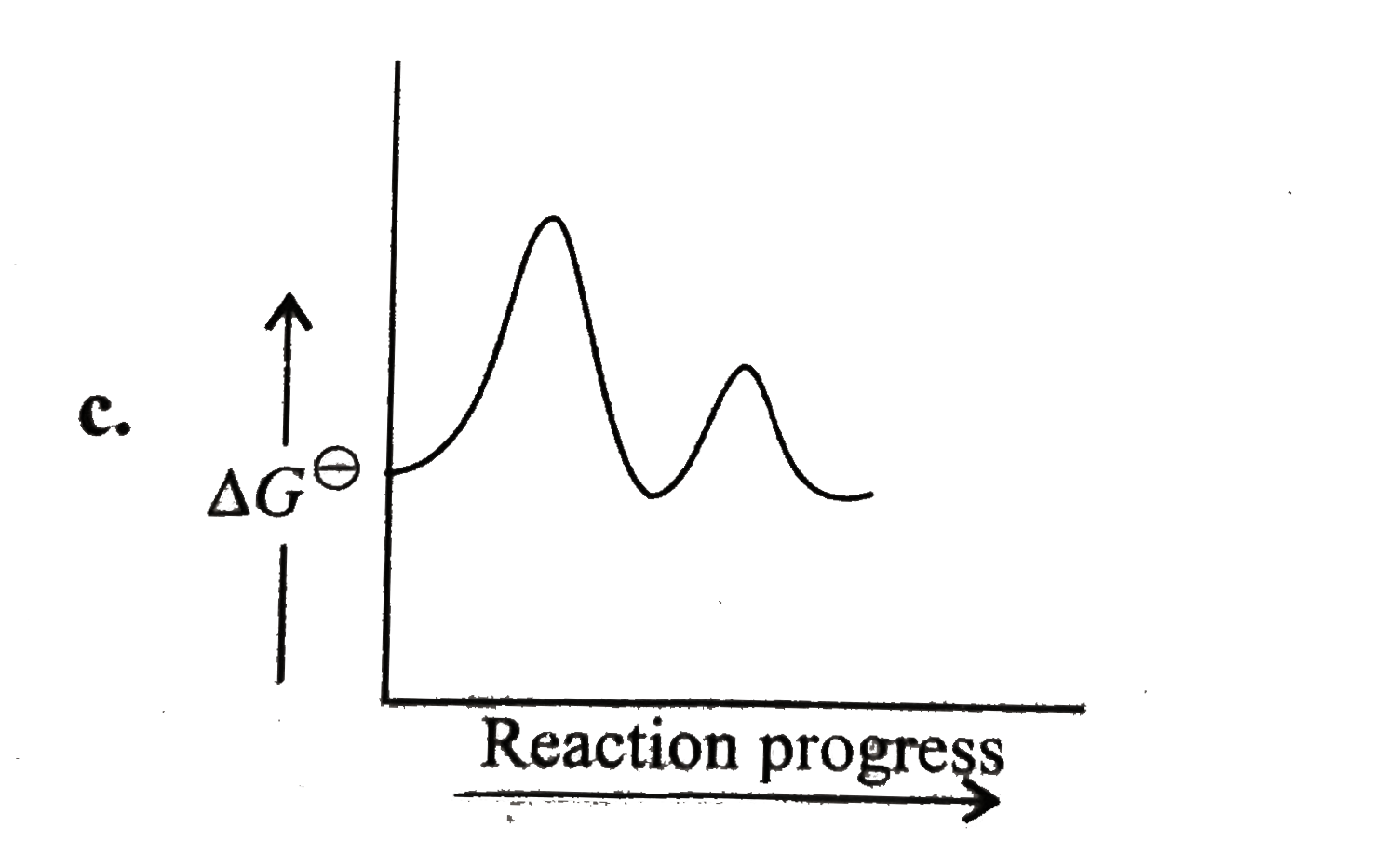The mechanism of SN1 reaction is given as :
A student writes general characteristics based on the given mechanism as :
(a) The reaction is favoured by weak nucleophiles.
(b) would be easily formed if the substituents are bulky.
(c) The reaction is accompanied by racemization.
Which observations are correct?
(a) and (b)
(a), (b) and (c)
(a) and (c)
(b) and (d)
The correct Answer is:B
To analyze the statements regarding the SN1 reaction mechanism, let's break down each statement step by step:
Step 1: Understanding the SN1 Mechanism
- The SN1 reaction involves two main steps:
1. Formation of a carbocation (R⁺) from the substrate (R-X).
2. Nucleophilic attack on the carbocation by a nucleophile (Y) to form the product (R-Y).
Step 2: Evaluating Statement (a)
- Statement (a): "The reaction is favored by weak nucleophiles."
- In an SN1 mechanism, the formation of the carbocation is the rate-determining step. Weak nucleophiles are preferred because they do not compete with the carbocation formation and do not act as bases. Strong nucleophiles would favor an SN2 mechanism instead.
- Conclusion: This statement is incorrect.
Step 3: Evaluating Statement (b)
- Statement (b): "R⁺ would be easily formed if the substituents are bulky."
- Bulky substituents stabilize the carbocation through hyperconjugation and inductive effects. Therefore, if the substituents are bulky, the carbocation (R⁺) will be more stable and can form more easily.
- Conclusion: This statement is correct.
Step 4: Evaluating Statement (c)
- Statement (c): "The reaction is accompanied by racemization."
- The carbocation formed in an SN1 reaction is planar (sp² hybridized), allowing the nucleophile to attack from either side. This leads to the formation of both enantiomers, resulting in a racemic mixture.
- Conclusion: This statement is correct.
Final Conclusion
- The correct observations based on the analysis are:
- Statement (a) is incorrect.
- Statement (b) is correct.
- Statement (c) is correct.
Thus, the correct observations are (b) and (c).
- The SN1 reaction involves two main steps:
1. Formation of a carbocation (R⁺) from the substrate (R-X).
2. Nucleophilic attack on the carbocation by a nucleophile (Y) to form the product (R-Y).
- Statement (a): "The reaction is favored by weak nucleophiles."
- In an SN1 mechanism, the formation of the carbocation is the rate-determining step. Weak nucleophiles are preferred because they do not compete with the carbocation formation and do not act as bases. Strong nucleophiles would favor an SN2 mechanism instead.
- Conclusion: This statement is incorrect.
- Statement (b): "R⁺ would be easily formed if the substituents are bulky."
- Bulky substituents stabilize the carbocation through hyperconjugation and inductive effects. Therefore, if the substituents are bulky, the carbocation (R⁺) will be more stable and can form more easily.
- Conclusion: This statement is correct.
- Statement (c): "The reaction is accompanied by racemization."
- The carbocation formed in an SN1 reaction is planar (sp² hybridized), allowing the nucleophile to attack from either side. This leads to the formation of both enantiomers, resulting in a racemic mixture.
- Conclusion: This statement is correct.
- The correct observations based on the analysis are:
- Statement (a) is incorrect.
- Statement (b) is correct.
- Statement (c) is correct.
Topper's Solved these Questions
Similar Questions
In the given reaction :
Ph−C∣∣O−CHY3H2N−OH−−−−−−→(X)PCI5−−→Δ(Y)
Y will be
View SolutionThe mechanism of SN1 reaction is given below :
CH3−CH3∣C∣CH3−Brstep-1−−→CH3−⊕C∣CH3−CH3+⊕BrNu−−−→step-IICH3−CH3∣C∣CH3−Nu
Given answer of the following questions on the basis of the machanism given below.
In which of the following reactions, reacemisation will be maximum ?
View Solution
Knowledge Check
For the reaction, R−XSlow−−→R⊕+X⊕,
R⊕+ɵOHFast−−→ROH
Which type of reaction coordinate diagram represents the above reaction mechanism?A B
B C
C Dd. This is SNl reaction where no tranistion state will be present
Dd. This is SNl reaction where no tranistion state will be presentIn the sequence of reactions
C6H5BrMg−−→ether(X)(i)CO2−−−−−−→(iii)H3O+(Y) the product (Y) isAbiphenylBm - bromobenzoic acidCbenzoic acidDbenzyl alcoholH−N=C=Ox↔H−⊕N≡C−ΘOy↔H−ΘN−C≡⊕Oz
which resonating structure is least stableAxByCzDAll are equivalent
MeCOOEt(i)NH2NH2−−−−−−−→(ii)HNO2(iii)ΘOH(B)−−−→MeOH(C)
Which of the following statements are correct about the given reaction?
View SolutionThe mechanism of SN1 reaction is given below :
CH3−CH3∣C∣CH3−Brstep-1−−→CH3−⊕C∣CH3−CH3+⊕BrNu−−−→step-IICH3−CH3∣C∣CH3−Nu
Given answer of the following questions on the basis of the machanism given below.
Whihc one of the following alkyl halides gives maximum reacemisation ?
View SolutionIdentify the products X and Y in the given reaction,
CH3−C∣BrH−CH3+MgDry ether−−−−−→XD2O−−→Y
View SolutionThe mechanism of SN1 reaction is given below :
CH3−CH3∣C∣CH3−Brstep-1−−→CH3−⊕C∣CH3−CH3+⊕BrNu−−−→step-IICH3−CH3∣C∣CH3−Nu
Given answer of the following questions on the basis of the machanism given below.
Which statement is NOT correct ?
View SolutionFor the given reaction,
R−R1∣C∣R2−xHOH−−→R−R1∣C∣R2−OH
Which substrate will give maximum racemisation?
View Solution